by: primoz March 30th, 2011 comments:
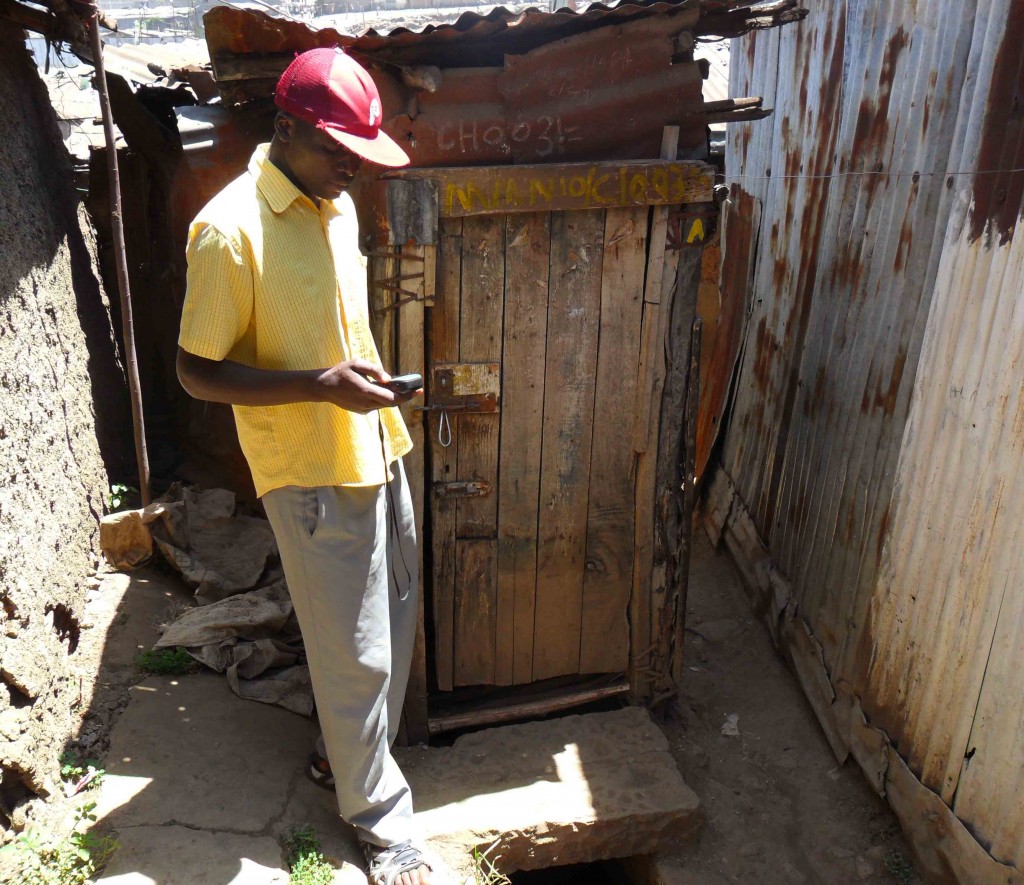
Jackson collecting a point in front of a toilet
The first phase of detailed water and sanitation data collection and editing is over. In two weeks our teams collected and edited 262 points including: 89 points with toilets, 108 water points and 65 open defecation areas.
What we learned from the numbers:
- The smaller number of toilets does not show the real picture as there can be many toilets at one point (we collected the number of units per point, but this is not reflected in the 89 figure).
- The number of open defecation areas is alarmingly high – there is almost the same number of toilet sites as there are open defecation areas – which clearly points to a lack of toilets.
- The number of toilets and water points will likely stay low because of the specific structure of Mathare: half of its buildings are high-rise apartment buildings that usually have toilets and water connections on every floor , which brings us to the next point:
- In order to get the real picture of the water and sanitation in Mathare, we need to figure out how to collect the data from these apartment buildings (it will need to be an inclusive approach, connecting community members, stakeholders, administration, government, etc.)
For the purpose of data editing we used basic mapping features to tag our points as amenities, like toilet and drinking water, and for ODAs we used the tag landuse-landfill. In addition to these basic features we added our own tagging scheme which we created so it coincided with the data collection forms.
There was some confusion here and there because of the massive amount of papers which contained the data of different points (something to think about in the future – how to get rid of the huge stocks of paper), but otherwise the data entry itself went well.
Here’s a detail from OSM showing all three features.
Phase two is already on under way.
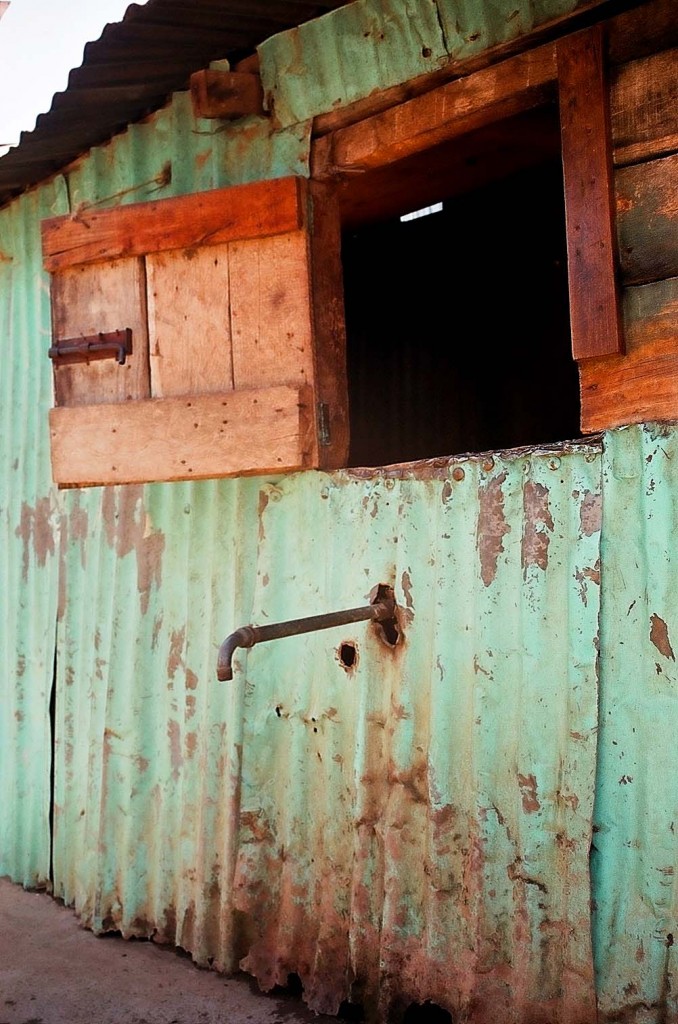
Water point
by: primoz March 3rd, 2011 comments:
Our teams have started with comprehensive thematic mapping of Water and Sanitation. Most of the things that we set out to map, such as water points and toilets, were pretty straightforward, but there were also some unknowns – like open defecation areas.
What is an open defecation area (ODA)? This is an area which is used by people to relieve themselves where there aren’t enough toilets for all or where people can’t afford to pay to use the toilet (more about it here). These areas are usually also dumping sites for “flying toilets†and other garbage, but mostly for excrement. People use them either early in the morning or late at night so others can’t see them.
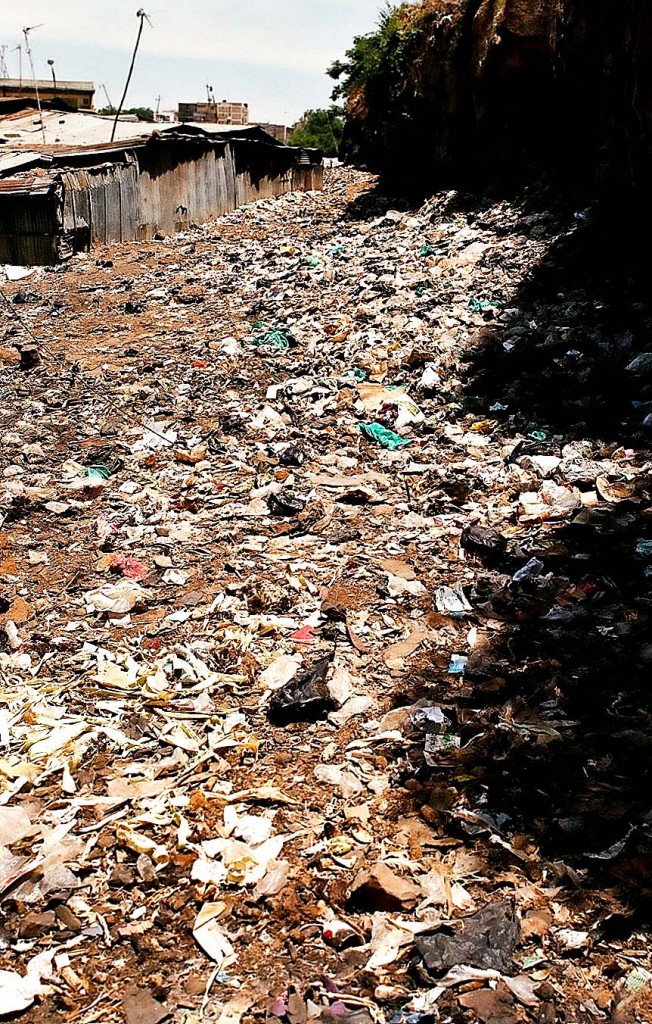
Open defecation area
We didn’t realize that this is such a big problem until we saw it with our own eyes. They are a huge health risk because they are usually situated in the middle of a very populated area and it is not an uncommon sight to see children playing near or even on top of them. They are also an indicator that something is terribly wrong with sanitation (especially toilets) in the slum.
So how do we map these areas? The first idea was to stand in the middle of the area and collect a point. We dismissed the idea as soon as we saw the expanse and the state of these areas. Most of our mappers come in flip flops and aren’t well equipped to walk there. So we decided we’re going to take a point near the ODAs, later search for the point with the help of satellite imagery and digitize the area. This way we’ll learn different techniques in mapping, get the exact area (in square meters) of all of the ODAs and therefore the whole area in Mathare which is covered by them.
Below are two examples:

Mapping open defecation areas
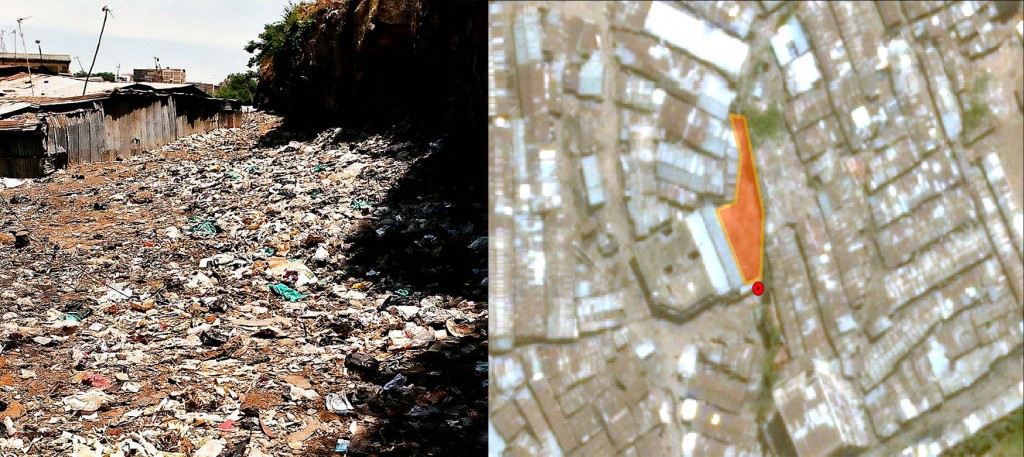
Mapping open defecation areas
by: jamie March 3rd, 2011 comments:
Thematic mapping in Mathare kicked off yesterday! The past three weeks since the Mathare community forum the team has been concentrating on video training and new media work with the Mathare participants. We’ve had some really exciting discussions about how we can support the spin-off blogging project and integrate with SMS reporting in Mathare. We have also been working to develop data collection forms so that the mappers could begin collecting water and sanitation information.
We separated the data collection forms into three types of objects 1) toilets 2) water points 3) open defecation areas (or athara as they are known in Mathare). We printed out 10 copies of each data collection form with the hope of field testing them with the mappers. We wanted to know “do they make sense?†“What questions and/or responses are we missing?â€
Questions for the data collection forms were drawn from the Map Kibera team’s experience mapping water and sanitation points of interest and from Community Cleaning Services and Plan Kenya’s work on urban community total led sanitation in Mathare (view the draft data collection forms here).
A team of 11 Mathare mappers gathered at Community Transformer. We went over each question on each form. In terms of mapping toilets, there was debate about the various types of toilets. “Pit latrine†was straight forward, as well as “hanging toilet†(a toilet that sits over a river or drain and drops directly into the water below – we’ve also been told that in some parts of Asia this is referred to as a helicopter toilet). Other types of toilets “Asian†and “European†and “Trench†weren’t immediately clear to the mappers.
The team broke into 3 separate groups to test out the forms. The main feedback on the forms included breaking the types of government run toilets into those run by the CDF vs LATF. This will be important for different groups that undertake social auditing. The other observation is that water in Mathare is usually purchased by the 20L gallon, so we changed the data collection form to that effect.
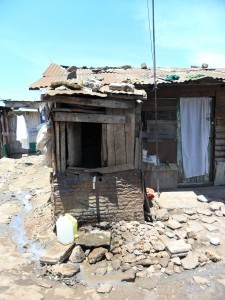
water vendor in Mathare
Measuring the number of people of use a toilet per day is difficult. For toilets that sit by the river and do not have a caretaker, this is nearly impossible (without sitting and counting people entering the toilet). Collecting information about toilets that belong to institutions (schools and churches) is quite time consuming. Entering the premises requires a formal introduction to the secretary or other person-in-charge. The school and church we visited were very welcoming and gave us quite a bit of information. We were able to find out that there are about 800 staff and students using just 6 toilets and 1 urinal at the school. The church next door had 5 toilets that were very well maintained. The church has about 100 visitors on week days and 500-1000 on the weekend.
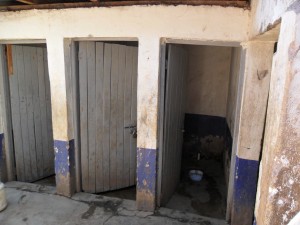
Toilets at the school
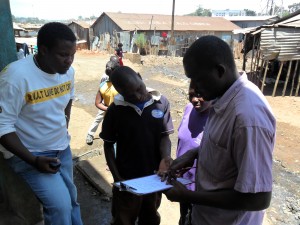
Mapping a CCS toilet
Open Defecation areas (or athara) are large areas where people come to shit outside. This is due to lack of access to toilets – for reasons such as ability to pay, proximity to the nearest toilet, security, etc. These areas are used in the early morning and evening due to the issue of privacy. It is very difficult to estimate the number of people who use an athara – the only good option would be to count the piles of shit (not feasible in this case, because the volunteer mappers don’t have the appropriate footwear nor expertise in sanitation issues). More on mapping open defecation areas….
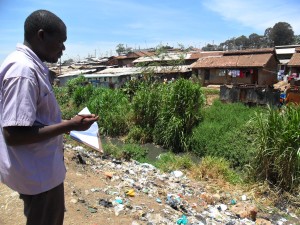
Javin mapping open defecation area
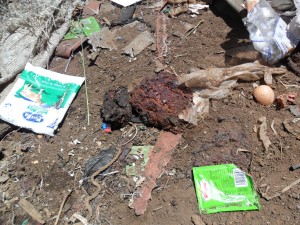
In UCLTS style, shit in an open defecation area
Every organization or a CBO or an NGO is looking for a different set of information when carrying out work on water and sanitation. The Map Mathare team is building a geographic database of different facilities with some basic attribute information. It’s our hope that sanitation specialists, public officials, youth groups, CBOs and others can and will utilize this information. At this point, we are in the process of field testing data collection tools to determine the baseline the mappers will build . In this case, the accuracy of information the mappers collect will decrease with the number of questions on the data collection tool, so we are looking for the balance between accuracy and level of detail. The mappers and the coordination team are learning a lot! By the end of March we hope to have a team of 10-20 dedicated, certified mappers!









